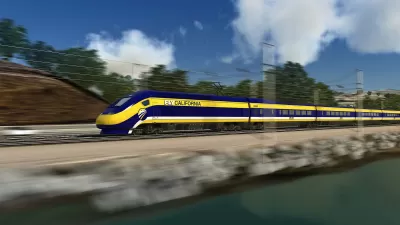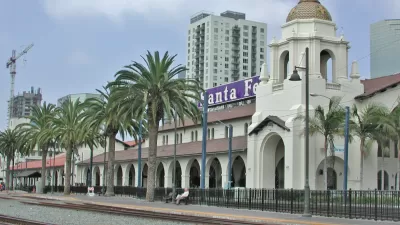Extensive investments in rail are slashing travel times in China, and creating a vastly more connected and accessible country.
"Over the next three years, the government will pour some $300 billion into its railways, expanding its network by 20,000 kilometers, including 13,000 kilometers of track designed for high-speed trains capable of traveling up to 350kph. Result: China, a nation long defined by the vastness of its geography, is getting, much, much smaller.
Already, the journey from Beijing to Taiyuan, the capital of Shanxi province, has been slashed from eight hours to three. Shortly before the Olympics last year, the 120km trip from Beijing to Tianjin was cut from almost an hour to just 27 minutes. In the next few years, a train journey from Wuhan to Guangzhou, halfway across the country, will shrink from 10 to three hours. The trip from Shanghai to Beijing, which currently clocks in at 10 grueling hours-and twice that, not so long ago-will be cut to just four, making train travel between China's two most important cities a viable competitor to air for the first time. Similarly, a trip from the capital to the southern manufacturing powerhouse of Guangzhou-more or less the entire length of the nation-will take just eight hours, compared with 20 before and more than a day and a half by bus."
Officials are hoping the increased interconnectedness will enable a greater distribution of economic development opportunities.
FULL STORY: The Shrinking of China

Americans May Be Stuck — But Why?
Americans are moving a lot less than they once did, and that is a problem. While Yoni Applebaum, in his highly-publicized article Stuck, gets the reasons badly wrong, it's still important to ask: why are we moving so much less than before?

Using Old Oil and Gas Wells for Green Energy Storage
Penn State researchers have found that repurposing abandoned oil and gas wells for geothermal-assisted compressed-air energy storage can boost efficiency, reduce environmental risks, and support clean energy and job transitions.

Placekeeping: Setting a New Precedent for City Planners
How a preservation-based approach to redevelopment and urban design can prevent displacement and honor legacy communities.

Study: Maui’s Plan to Convert Vacation Rentals to Long-Term Housing Could Cause Nearly $1 Billion Economic Loss
The plan would reduce visitor accommodation by 25,% resulting in 1,900 jobs lost.

Idaho Data: Unexpected Vehicle Repairs Exacerbate Housing Instability, Eviction Risk
Over 21 percent of clients struggle with transportation barriers.

A Year-Long Investigation On Permanent Supportive Housing
The New York Times reveals what’s working and what’s not in the cornerstone of Housing First.
Urban Design for Planners 1: Software Tools
This six-course series explores essential urban design concepts using open source software and equips planners with the tools they need to participate fully in the urban design process.
Planning for Universal Design
Learn the tools for implementing Universal Design in planning regulations.
Heyer Gruel & Associates PA
City of Moreno Valley
Institute for Housing and Urban Development Studies (IHS)
City of Grandview
Harvard GSD Executive Education
Salt Lake City
NYU Wagner Graduate School of Public Service
City of Cambridge, Maryland





























